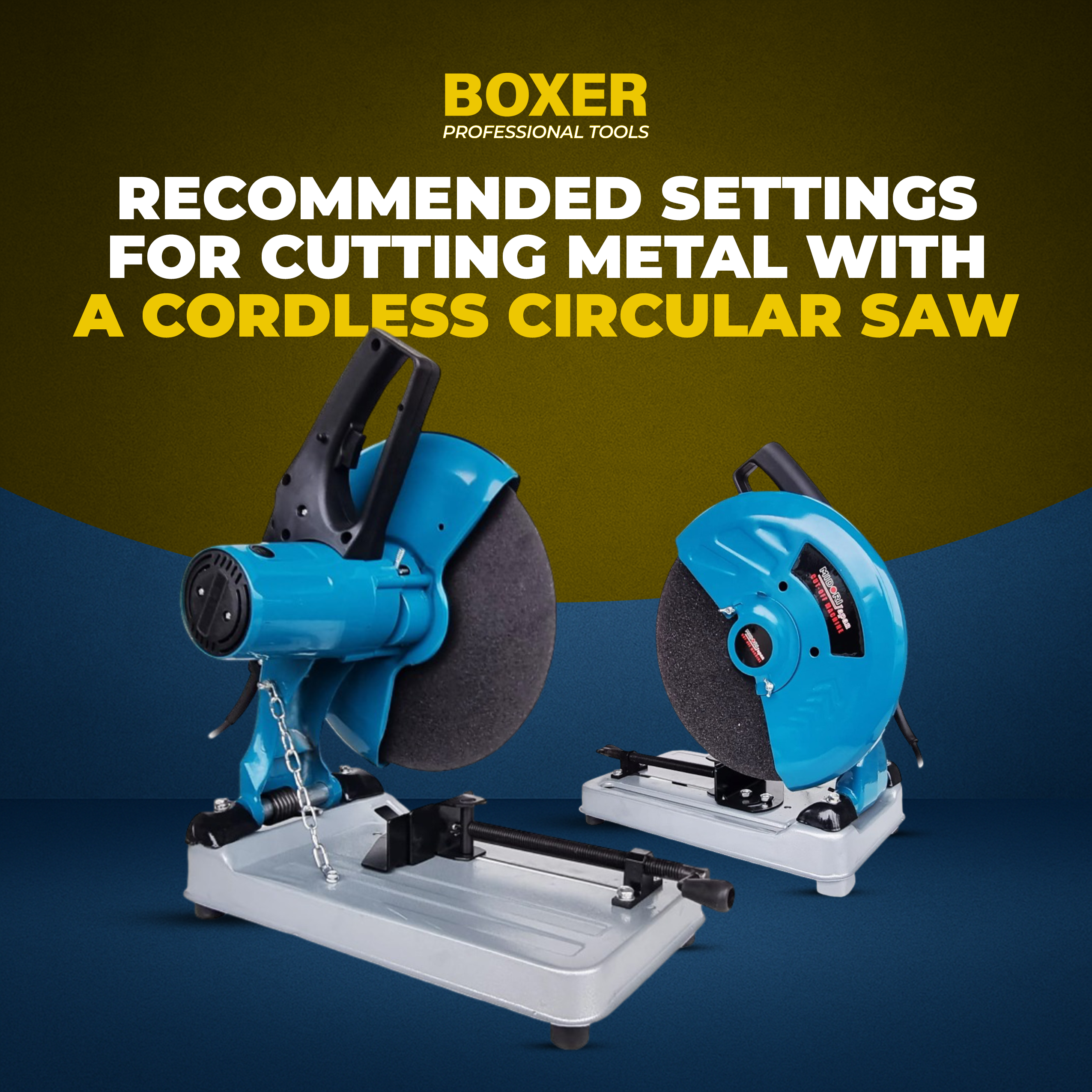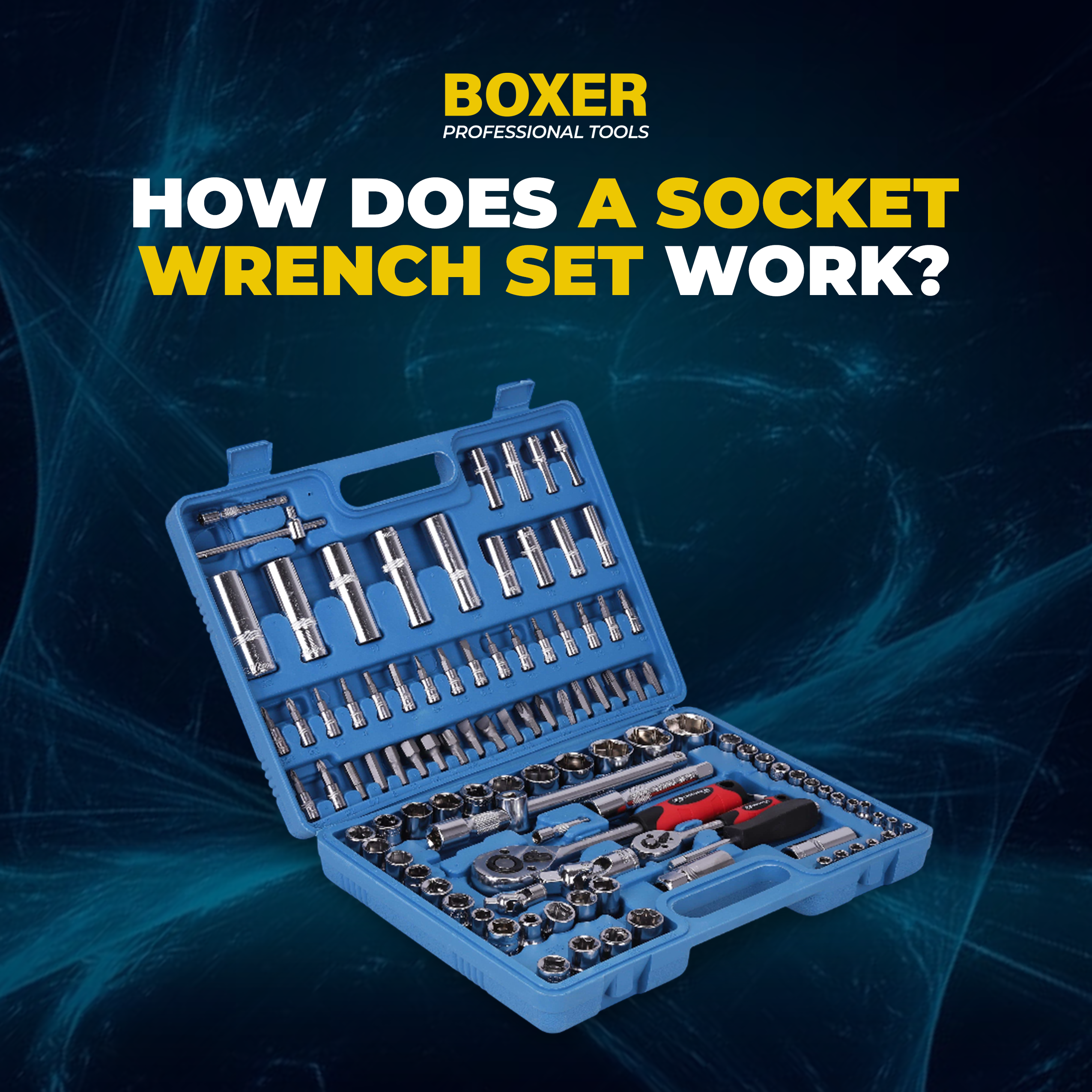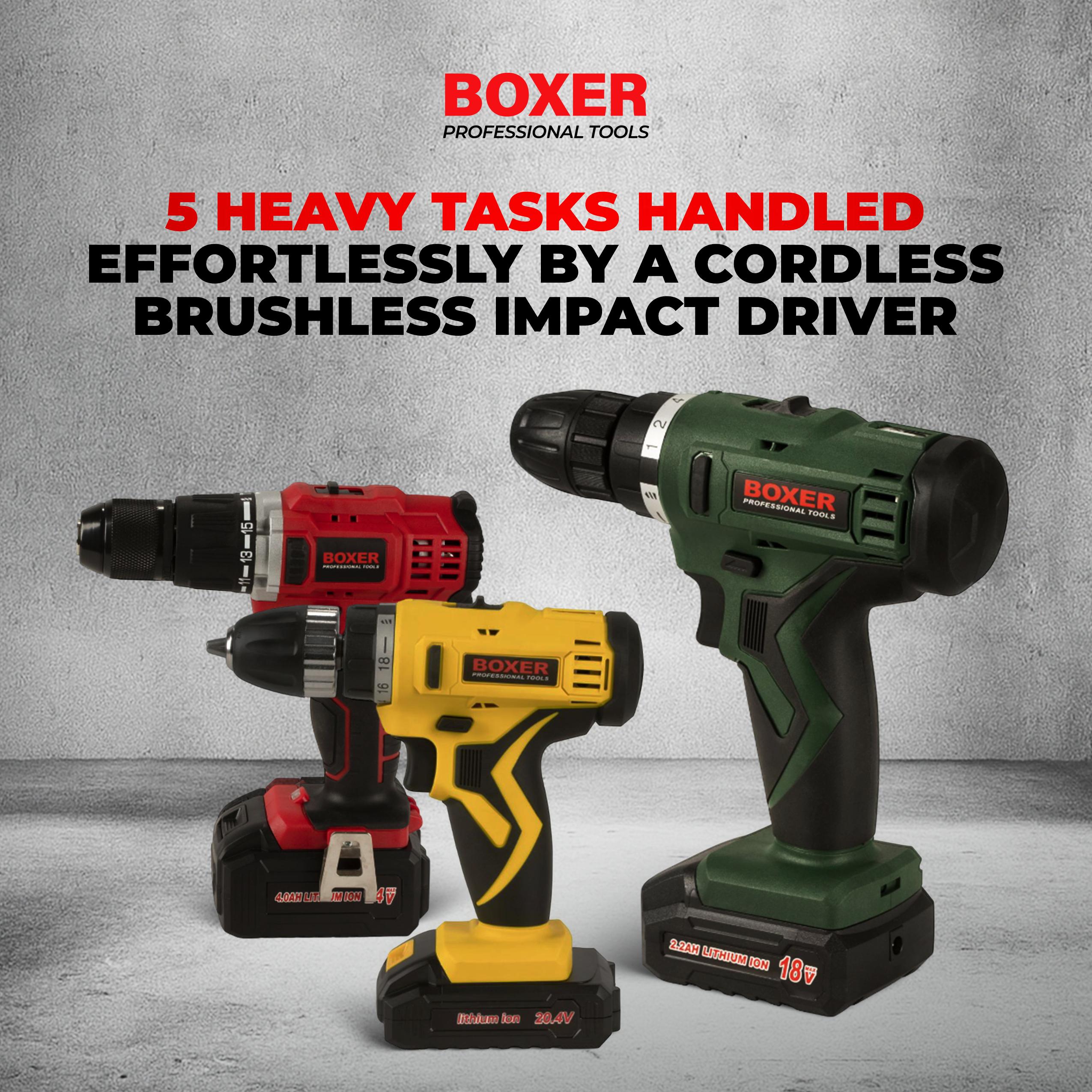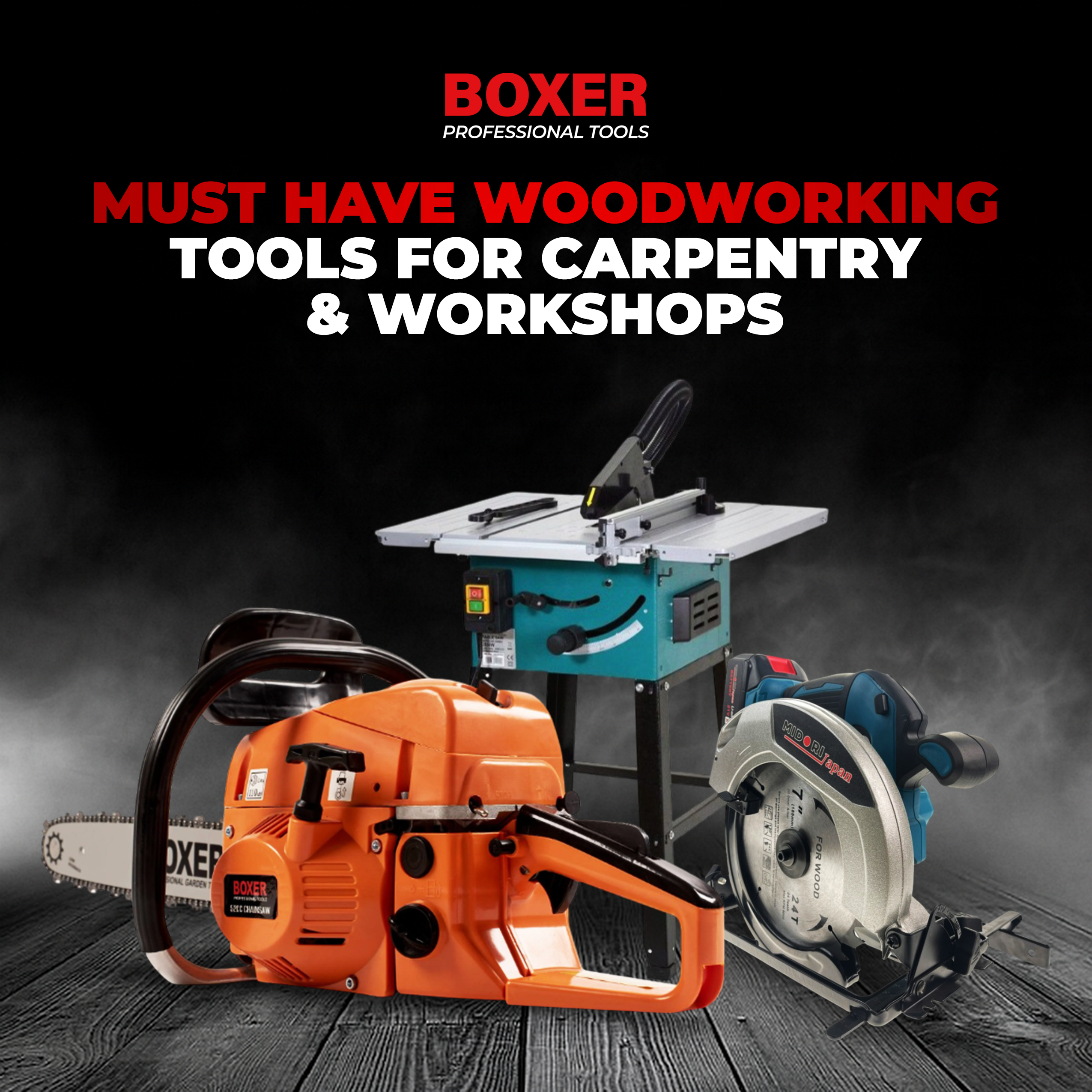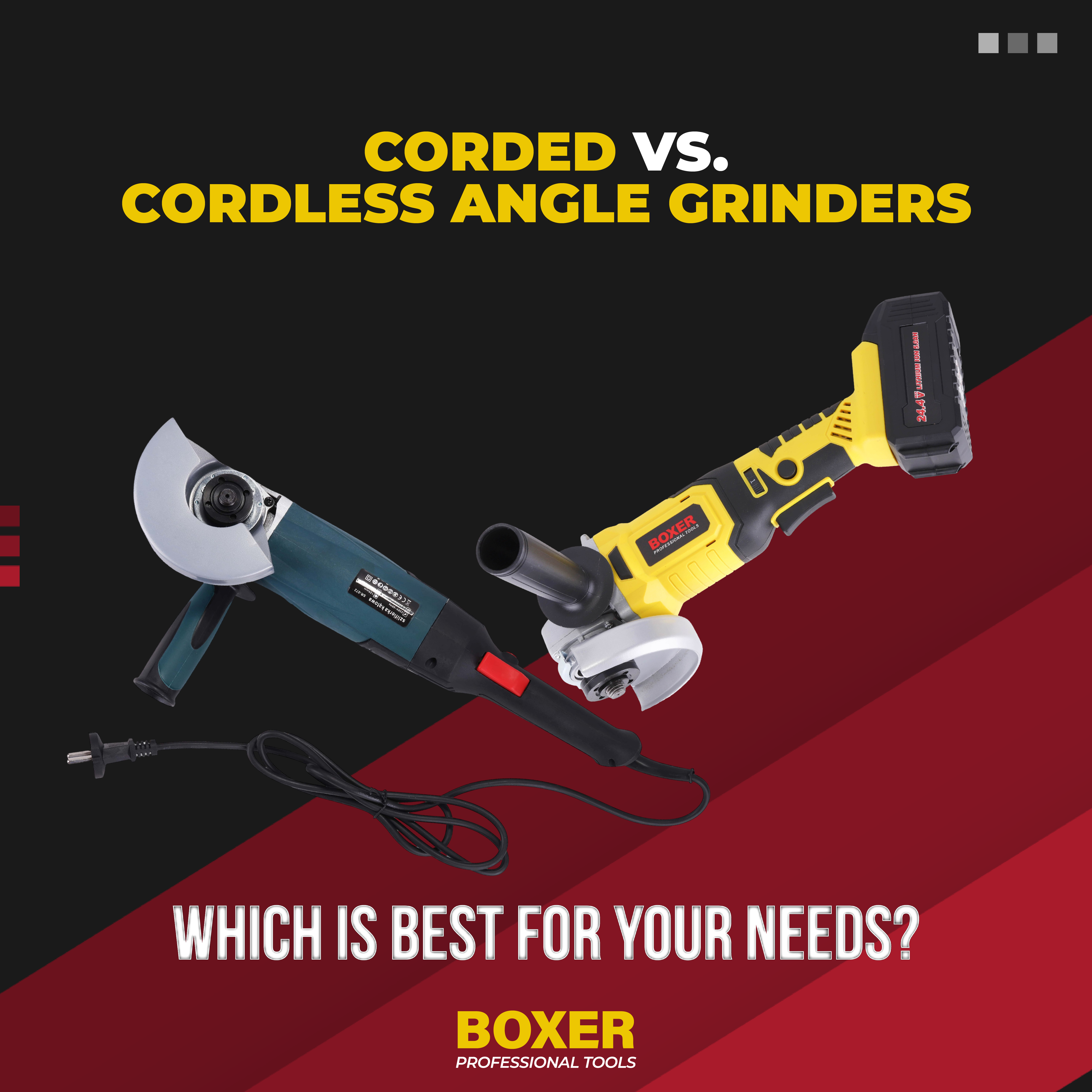
Corded vs. Cordless Angle Grinders: Which is Best for Your Needs?
Angle grinders are indispensable tools for cutting, grinding, and polishing various materials. They are a staple in workshops, construction sites, and even home garages. However, with the advent of cordless technology, the choice between a corded and a cordless angle grinder has become more complex. Each type has its own set of advantages and disadvantages, making the decision dependent on your specific needs and preferences.
In this comprehensive guide, we will delve into the key differences between corded and cordless angle grinders, exploring their performance, convenience, safety features, and ideal use cases. By the end, you will be equipped to make an informed decision and select the angle grinder that best suits your requirements.
What is an Angle Grinder?
Before diving into the comparison, let's briefly understand what an angle grinder is and its primary functions.
An angle grinder is a handheld power tool that uses an abrasive disc or wheel to cut, grind, or polish various materials, including metal, concrete, stone, and tile. The disc is mounted on a spindle that rotates at high speeds, typically between 6,000 and 12,000 revolutions per minute (RPM). The angle grinder's versatility stems from the ability to swap out different discs to perform various tasks.
Now, let's explore the two main types of angle grinders: corded and cordless.
Corded Angle Grinders
Corded angle grinders are the traditional and most common type. They are powered by electricity through a power cord that plugs into an electrical outlet. Let's look at their pros and cons.
Advantages of Corded Angle Grinders
- Consistent Power: Corded angle grinders offer a constant and reliable power supply, ensuring uninterrupted operation for extended periods. This makes them ideal for heavy-duty tasks that require continuous use.
- High Performance: Corded models generally have higher power output compared to cordless counterparts. This translates to faster cutting, grinding, and polishing speeds, particularly for demanding applications.
- No Downtime: Since corded grinders are directly plugged into a power source, there is no need to worry about batteries running out or recharging. This eliminates downtime and allows for continuous work.
- Lightweight: Without the added weight of batteries, corded angle grinders are typically lighter than cordless models. This can reduce fatigue during prolonged use and improve maneuverability.
- Cost-Effective: Corded angle grinders are generally more affordable than cordless options, making them a budget-friendly choice for many users.
Disadvantages of Corded Angle Grinders
- Limited Mobility: The power cord restricts the movement and reach of corded angle grinders. This can be inconvenient in tight spaces or areas without readily available power outlets.
- Trip Hazard: The power cord can pose a trip hazard, especially in cluttered work environments. It's essential to exercise caution and manage the cord to prevent accidents.
- Outlet Dependency: Corded grinders rely on access to electrical outlets, limiting their use in remote locations or during power outages.
Cordless Angle Grinders
Cordless angle grinders are a relatively newer addition to the market. They operate on rechargeable batteries, offering greater freedom of movement and flexibility.
Advantages of Cordless Angle Grinders
- Portability and Freedom: The absence of a power cord allows for unrestricted movement and access to tight or remote areas. This makes cordless angle grinders highly portable and convenient for various applications.
- No Trip Hazard: Cordless grinders eliminate the risk of tripping over power cords, enhancing safety in the workplace.
- Outdoor Use: Cordless models are ideal for outdoor projects where power outlets may be scarce or unavailable.
- Quick Setup: Cordless angle grinders are ready to use with a charged battery, eliminating the need to find and connect to a power source.
Disadvantages of Cordless Angle Grinders
- Limited Runtime: Cordless grinders rely on battery power, which has a finite runtime. The duration of operation depends on the battery capacity and the intensity of use.
- Downtime for Recharging: When the battery runs out, the grinder becomes unusable until recharged. This can disrupt workflow and cause delays.
- Lower Power Output: Cordless angle grinders generally have lower power output compared to corded models. This may affect their performance in heavy-duty tasks or when working with dense materials.
- Higher Cost: Cordless angle grinders and their batteries are typically more expensive than corded options.
Choosing the Right Angle Grinder: Key Factors to Consider
Now that we understand the pros and cons of each type, let's explore the key factors to consider when choosing the right angle grinder for your needs.
- Power and Performance: If you require high power and consistent performance for heavy-duty tasks, a corded angle grinder is the preferred choice. However, if portability and freedom of movement are paramount, a cordless model may be more suitable, even with slightly lower power output.
- Runtime and Battery Life: For cordless angle grinders, consider the battery capacity and runtime. If you anticipate extended use, invest in additional batteries or a model with a longer runtime to minimize downtime.
- Mobility and Accessibility: If you need to work in tight spaces, remote locations, or areas without readily available power outlets, a cordless angle grinder is the ideal solution.
- Safety: Both corded and cordless angle grinders come with safety features, such as guards, handles, and switches. Ensure the model you choose has adequate safety measures to protect you during operation.
- Budget: Corded angle grinders are generally more affordable than cordless options. Consider your budget and prioritize features that align with your needs.
Corded vs. Cordless Angle Grinders: Ideal Use Cases
To further assist in your decision-making, let's explore the ideal use cases for each type of angle grinder.
Corded Angle Grinders
- Workshops and Garages: Corded models are well-suited for workshops and garages where power outlets are readily available. Their consistent power and high performance make them ideal for heavy-duty tasks and extended use.
- Construction Sites: Corded angle grinders are commonly used in construction sites for cutting, grinding, and polishing various materials. Their reliability and continuous operation make them suitable for demanding projects.
- Metal Fabrication: Corded grinders are preferred for metal fabrication tasks due to their high power output and ability to handle dense materials.
Cordless Angle Grinders
- Home DIY Projects: Cordless models are convenient for home DIY projects where portability and freedom of movement are essential. Their ease of use and quick setup make them suitable for occasional tasks.
- Outdoor Projects: Cordless angle grinders are ideal for outdoor projects, such as landscaping, fence installation, and deck repairs, where access to power outlets may be limited.
- Automotive Repairs: Cordless grinders are handy for automotive repairs and maintenance, allowing access to tight spaces and offering greater flexibility.
- Remote Locations: Cordless models are perfect for working in remote locations or during power outages, providing uninterrupted operation without the need for external power sources.
The choice between a corded and a cordless angle grinder ultimately depends on your specific needs, preferences, and the nature of your projects. Corded models offer consistent power, high performance, and affordability, making them ideal for heavy-duty tasks and workshops with readily available power outlets. On the other hand, cordless angle grinders provide portability, freedom of movement, and safety, making them perfect for outdoor projects, remote locations, and tasks requiring flexibility.
Consider the key factors discussed in this guide, including power, runtime, mobility, safety, and budget, to make an informed decision. By carefully evaluating your requirements, you can select the angle grinder that best suits your needs and enhances your productivity and efficiency. Remember, safety should always be a priority when operating power tools. Follow the manufacturer's instructions, wear appropriate protective gear, and exercise caution to prevent accidents and injuries.
Whether you opt for a corded or cordless angle grinder, investing in a high-quality tool will ensure reliable performance and longevity. Choose a reputable brand known for its durability, safety features, and after-sales support. With the right angle grinder in your hands, you can tackle a wide range of cutting, grinding, and polishing tasks with confidence and precision.
Copyright © 2026 Boxertools | Powered By Orance Media Group


